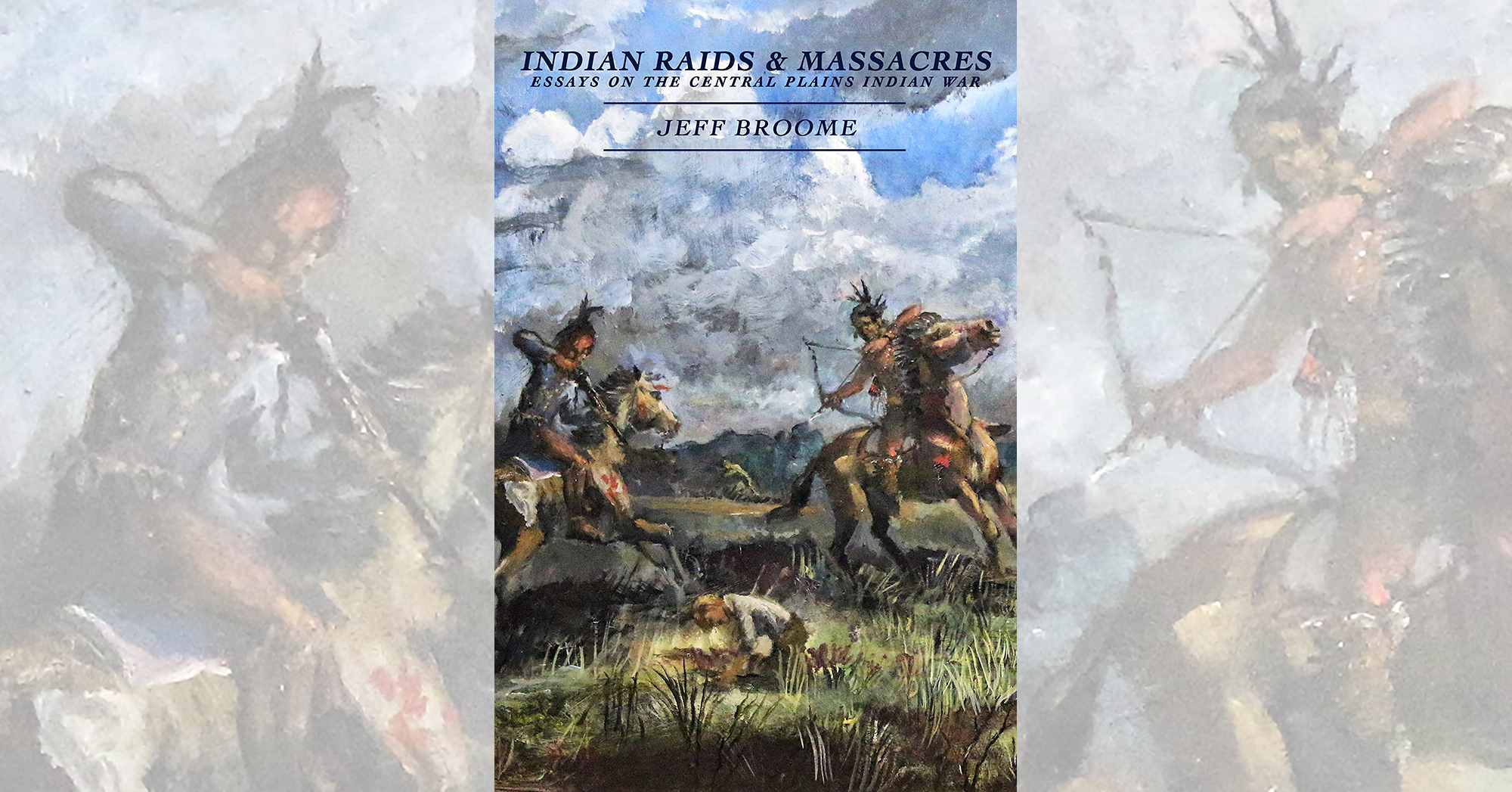Indian Raids and Massacres: Essays on the Central Plains Indian War, by Jeff Broome, Caxton Press, Caldwell, Idaho, 2020, $34.95
All 13 chapters in this well-researched 506-page book deal with unpleasant and painful events on the frontier, as the title makes manifest. The victims are pioneers and soldiers. The perpetrators are American Indians. In his preface Jeff Broome acknowledges there is another side—the Indian side—to the five-year (beginning in early August 1864) Cheyenne war he calls the Central Plains Indian war. “The painful events [Indians] endured is no less great than what was experienced on the other side,” writes Broome, who has been published in Wild West and other magazines and also wrote the well-received history Dog Solder Justice: The Ordeal of Susanna Alderdice in the Kansas Indian War. The Indians could see their eventual doom, he notes, as white settlers had nothing to offer the natives except cultural loss. “Conflict was inevitable,” Broome concludes.
The rest of his book relates war stories in chronological order from the perspective of white Americans. Each chapter was originally published elsewhere, but Broome has updated them all with findings from recent scholarship. In the first chapter he provides new information on the June 1864 Hungate massacre in Elbert County, Colorado Territory. For this and accounts that follow he draws on Indian depredation claims preserved at the National Archives in Washington, D.C. Historians have cited the Hungate massacre as the catalyst that drove Governor John Evans to create the 3rd Colorado Cavalry, the force that exacted bloody vengeance at Sand Creek that November 29. But as Broome points out, Evans acted only after a series of Indian raids against ranchers along Nebraska Territory’s Little Blue River and Plum Creek August 7–9. The author spends two chapters relating those devastating raids, following up with chapters about Sand Creek, the captive Fletcher sisters, Lt. Col. George Custer’s summer campaign of 1867 and the “massacre” of 2nd Lt. Lyman S. Kidder, 10 men of the 2nd U.S. Cavalry and their guide. “Custer’s discovery of the dead soldiers’ remains,” writes Broome, “may have provided an important psychological motivation in his decision shortly thereafter to leave his command and visit his wife, a decision that resulted in his court-martial.”
Chapter 7 is titled “Military Reports and the August 1868 Raid in North-Central Kansas: Prelude to the Washita Fight.” But Broome, who has a background in philosophy, has more than that to convey. He also shares a lesson in historiography, which he says is “about epistemology, focusing on how something is determined to be fact and not fiction.” This chapter, he writes, “is first and foremost about confronting modern historians who have demonstrated weak epistemological skills when examining original documents pertaining to the Central Plains Indian war.” He specifically scolds Indian wars historians and frequent Wild West contributors John Monnett and Louis Kraft, in what he calls “an objective attack upon the supposition that original documents have more interpretive significance than they warrant.”
After that come chapters addressing two of the biggest names in Wild West history—Buffalo Bill Cody, regarding his role in the Summit Springs fight of July 11, 1869 (the last clash in Colorado Territory between Cheyenne warriors and the U.S. military), and Wild Bill Hickok, regarding the soldier who almost killed him during a 1870 brawl in Hays City, Kan. Overall, Broome, whose great-great-uncle was with the 3rd Colorado Cavalry at Sand Creek, provides plenty of interesting material for anyone interested in the Indian wars—perhaps even Monnett and Kraft.
—Editor
This post contains affiliate links. If you buy something through our site, we might earn a commission.





